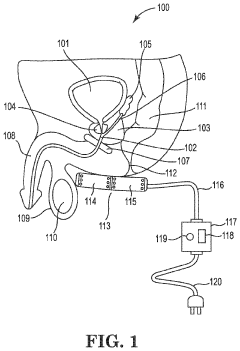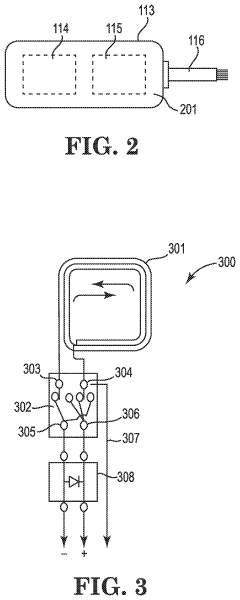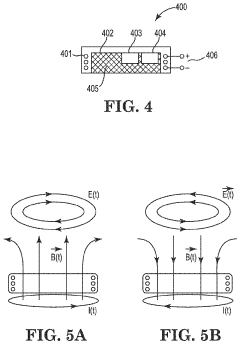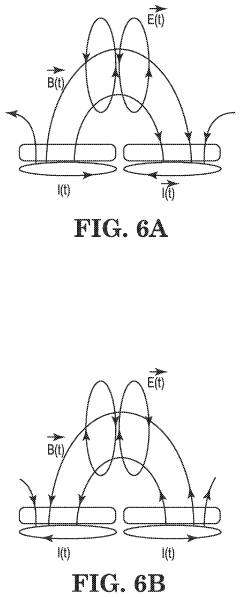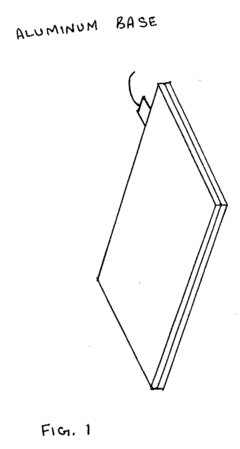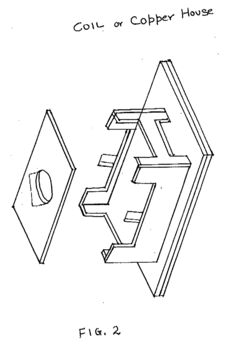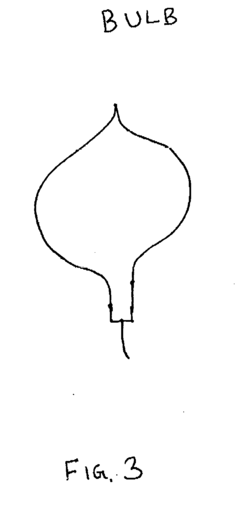How PEMF Therapy Assists in Detoxification Processes?
AUG 11, 20259 MIN READ
Generate Your Research Report Instantly with AI Agent
Patsnap Eureka helps you evaluate technical feasibility & market potential.
PEMF Therapy Background and Detoxification Goals
Pulsed Electromagnetic Field (PEMF) therapy has emerged as a promising non-invasive treatment modality in recent years. Its roots can be traced back to the mid-20th century when scientists began exploring the effects of electromagnetic fields on biological systems. The technology has since evolved, with significant advancements in the understanding of how electromagnetic fields interact with cellular processes.
PEMF therapy operates on the principle that electromagnetic fields can influence cellular function and promote healing. It involves the application of pulsed, low-frequency electromagnetic fields to the body, which are believed to stimulate various physiological processes. The therapy has gained attention for its potential benefits in pain management, tissue repair, and more recently, detoxification.
In the context of detoxification, PEMF therapy aims to enhance the body's natural ability to eliminate toxins and waste products. The primary goals of PEMF therapy in detoxification processes include improving cellular function, enhancing circulation, and stimulating the lymphatic system. By targeting these areas, PEMF therapy seeks to support the body's inherent detoxification mechanisms and promote overall wellness.
One of the key objectives of PEMF therapy in detoxification is to optimize cellular metabolism. The electromagnetic pulses are thought to influence cell membrane potential, potentially leading to improved nutrient uptake and waste elimination at the cellular level. This enhanced cellular function may contribute to more efficient detoxification processes throughout the body.
Another important goal is to boost circulation and lymphatic flow. PEMF therapy is believed to stimulate blood flow and lymphatic drainage, which are crucial for the transport of toxins out of tissues and their subsequent elimination from the body. Improved circulation may also enhance the delivery of oxygen and nutrients to cells, further supporting their detoxification capabilities.
PEMF therapy also aims to reduce inflammation and oxidative stress, both of which can impede the body's natural detoxification processes. By potentially modulating inflammatory responses and supporting antioxidant mechanisms, PEMF therapy may create a more favorable environment for detoxification to occur.
As research in this field progresses, the technology behind PEMF therapy continues to evolve. Current efforts focus on optimizing treatment parameters, such as frequency, intensity, and duration, to maximize the therapy's effectiveness in supporting detoxification processes. The ongoing exploration of PEMF therapy's potential in detoxification reflects a broader trend towards integrating non-invasive, complementary approaches into holistic health and wellness strategies.
PEMF therapy operates on the principle that electromagnetic fields can influence cellular function and promote healing. It involves the application of pulsed, low-frequency electromagnetic fields to the body, which are believed to stimulate various physiological processes. The therapy has gained attention for its potential benefits in pain management, tissue repair, and more recently, detoxification.
In the context of detoxification, PEMF therapy aims to enhance the body's natural ability to eliminate toxins and waste products. The primary goals of PEMF therapy in detoxification processes include improving cellular function, enhancing circulation, and stimulating the lymphatic system. By targeting these areas, PEMF therapy seeks to support the body's inherent detoxification mechanisms and promote overall wellness.
One of the key objectives of PEMF therapy in detoxification is to optimize cellular metabolism. The electromagnetic pulses are thought to influence cell membrane potential, potentially leading to improved nutrient uptake and waste elimination at the cellular level. This enhanced cellular function may contribute to more efficient detoxification processes throughout the body.
Another important goal is to boost circulation and lymphatic flow. PEMF therapy is believed to stimulate blood flow and lymphatic drainage, which are crucial for the transport of toxins out of tissues and their subsequent elimination from the body. Improved circulation may also enhance the delivery of oxygen and nutrients to cells, further supporting their detoxification capabilities.
PEMF therapy also aims to reduce inflammation and oxidative stress, both of which can impede the body's natural detoxification processes. By potentially modulating inflammatory responses and supporting antioxidant mechanisms, PEMF therapy may create a more favorable environment for detoxification to occur.
As research in this field progresses, the technology behind PEMF therapy continues to evolve. Current efforts focus on optimizing treatment parameters, such as frequency, intensity, and duration, to maximize the therapy's effectiveness in supporting detoxification processes. The ongoing exploration of PEMF therapy's potential in detoxification reflects a broader trend towards integrating non-invasive, complementary approaches into holistic health and wellness strategies.
Market Analysis for PEMF Detoxification Applications
The market for PEMF (Pulsed Electromagnetic Field) therapy in detoxification applications is experiencing significant growth, driven by increasing awareness of environmental toxins and the need for non-invasive health solutions. The global PEMF therapy market, which includes detoxification applications, is projected to expand at a compound annual growth rate (CAGR) of over 5% in the coming years.
Detoxification has become a key concern for consumers due to the rising prevalence of chronic diseases and the growing understanding of the impact of environmental pollutants on health. This has created a substantial demand for PEMF therapy devices that claim to assist in the body's natural detoxification processes.
The market for PEMF detoxification applications can be segmented into clinical and home-use devices. Clinical devices, used in medical facilities and wellness centers, currently dominate the market share. However, the home-use segment is expected to grow at a faster rate due to increasing consumer interest in self-administered health treatments and the development of more affordable, user-friendly devices.
Geographically, North America holds the largest market share for PEMF detoxification applications, followed by Europe. This is attributed to higher healthcare expenditure, greater awareness of alternative therapies, and a strong presence of key market players in these regions. Asia-Pacific is anticipated to be the fastest-growing market, driven by increasing disposable incomes, rising health consciousness, and improving healthcare infrastructure.
Key market drivers include the growing preference for non-pharmacological treatment options, increasing research supporting the efficacy of PEMF therapy in various health applications, and the rising adoption of integrative medicine approaches. The aging population in many developed countries is also contributing to market growth, as older adults are more likely to seek alternative therapies for chronic conditions and general wellness.
However, the market faces challenges such as skepticism from some medical professionals, lack of standardized protocols for PEMF therapy in detoxification, and regulatory hurdles in certain countries. Additionally, the high cost of advanced PEMF devices may limit adoption in some market segments.
Despite these challenges, the market outlook remains positive. Technological advancements, such as the development of portable and wearable PEMF devices, are expected to expand the consumer base. Furthermore, the increasing integration of PEMF therapy into holistic wellness programs and spa treatments is creating new market opportunities.
As consumer interest in natural and non-invasive health solutions continues to grow, the PEMF detoxification market is poised for sustained expansion. Market players are focusing on product innovation, clinical research, and strategic partnerships to capitalize on this growing demand and establish a strong foothold in this evolving market segment.
Detoxification has become a key concern for consumers due to the rising prevalence of chronic diseases and the growing understanding of the impact of environmental pollutants on health. This has created a substantial demand for PEMF therapy devices that claim to assist in the body's natural detoxification processes.
The market for PEMF detoxification applications can be segmented into clinical and home-use devices. Clinical devices, used in medical facilities and wellness centers, currently dominate the market share. However, the home-use segment is expected to grow at a faster rate due to increasing consumer interest in self-administered health treatments and the development of more affordable, user-friendly devices.
Geographically, North America holds the largest market share for PEMF detoxification applications, followed by Europe. This is attributed to higher healthcare expenditure, greater awareness of alternative therapies, and a strong presence of key market players in these regions. Asia-Pacific is anticipated to be the fastest-growing market, driven by increasing disposable incomes, rising health consciousness, and improving healthcare infrastructure.
Key market drivers include the growing preference for non-pharmacological treatment options, increasing research supporting the efficacy of PEMF therapy in various health applications, and the rising adoption of integrative medicine approaches. The aging population in many developed countries is also contributing to market growth, as older adults are more likely to seek alternative therapies for chronic conditions and general wellness.
However, the market faces challenges such as skepticism from some medical professionals, lack of standardized protocols for PEMF therapy in detoxification, and regulatory hurdles in certain countries. Additionally, the high cost of advanced PEMF devices may limit adoption in some market segments.
Despite these challenges, the market outlook remains positive. Technological advancements, such as the development of portable and wearable PEMF devices, are expected to expand the consumer base. Furthermore, the increasing integration of PEMF therapy into holistic wellness programs and spa treatments is creating new market opportunities.
As consumer interest in natural and non-invasive health solutions continues to grow, the PEMF detoxification market is poised for sustained expansion. Market players are focusing on product innovation, clinical research, and strategic partnerships to capitalize on this growing demand and establish a strong foothold in this evolving market segment.
Current PEMF Technology and Detoxification Challenges
Pulsed Electromagnetic Field (PEMF) therapy has gained significant attention in recent years for its potential in assisting detoxification processes. However, the current state of PEMF technology and its application in detoxification face several challenges that need to be addressed.
One of the primary challenges is the lack of standardization in PEMF devices and protocols. Different manufacturers produce devices with varying frequencies, intensities, and waveforms, making it difficult to compare results across studies and establish optimal treatment parameters for detoxification. This inconsistency hampers the widespread adoption of PEMF therapy in clinical settings and limits its integration into mainstream detoxification protocols.
Another significant challenge is the limited understanding of the precise mechanisms by which PEMF therapy influences detoxification processes at the cellular level. While studies have shown promising results in enhancing cellular function and promoting the elimination of toxins, the exact pathways and molecular interactions involved remain unclear. This knowledge gap hinders the development of more targeted and efficient PEMF therapies for detoxification purposes.
The current PEMF technology also faces limitations in terms of penetration depth and specificity. Many existing devices struggle to deliver effective electromagnetic fields to deeper tissues, potentially limiting their efficacy in systemic detoxification. Additionally, the ability to target specific organs or tissues involved in detoxification processes, such as the liver or kidneys, remains a challenge with current PEMF technologies.
Regulatory hurdles present another obstacle in the advancement of PEMF therapy for detoxification. The lack of clear guidelines and approval processes for PEMF devices specifically designed for detoxification purposes slows down innovation and clinical adoption. This regulatory uncertainty also contributes to skepticism among healthcare professionals and potential users.
The integration of PEMF therapy with other detoxification methods and technologies is an area that requires further development. While PEMF therapy shows promise as a standalone treatment, its potential synergies with other detoxification approaches, such as chelation therapy or infrared sauna, have not been fully explored or optimized.
Lastly, the need for more robust, long-term clinical studies on the efficacy and safety of PEMF therapy for detoxification remains a significant challenge. While preliminary research has shown encouraging results, larger-scale, controlled studies are necessary to establish PEMF therapy as a reliable and effective method for enhancing detoxification processes in various health conditions and populations.
One of the primary challenges is the lack of standardization in PEMF devices and protocols. Different manufacturers produce devices with varying frequencies, intensities, and waveforms, making it difficult to compare results across studies and establish optimal treatment parameters for detoxification. This inconsistency hampers the widespread adoption of PEMF therapy in clinical settings and limits its integration into mainstream detoxification protocols.
Another significant challenge is the limited understanding of the precise mechanisms by which PEMF therapy influences detoxification processes at the cellular level. While studies have shown promising results in enhancing cellular function and promoting the elimination of toxins, the exact pathways and molecular interactions involved remain unclear. This knowledge gap hinders the development of more targeted and efficient PEMF therapies for detoxification purposes.
The current PEMF technology also faces limitations in terms of penetration depth and specificity. Many existing devices struggle to deliver effective electromagnetic fields to deeper tissues, potentially limiting their efficacy in systemic detoxification. Additionally, the ability to target specific organs or tissues involved in detoxification processes, such as the liver or kidneys, remains a challenge with current PEMF technologies.
Regulatory hurdles present another obstacle in the advancement of PEMF therapy for detoxification. The lack of clear guidelines and approval processes for PEMF devices specifically designed for detoxification purposes slows down innovation and clinical adoption. This regulatory uncertainty also contributes to skepticism among healthcare professionals and potential users.
The integration of PEMF therapy with other detoxification methods and technologies is an area that requires further development. While PEMF therapy shows promise as a standalone treatment, its potential synergies with other detoxification approaches, such as chelation therapy or infrared sauna, have not been fully explored or optimized.
Lastly, the need for more robust, long-term clinical studies on the efficacy and safety of PEMF therapy for detoxification remains a significant challenge. While preliminary research has shown encouraging results, larger-scale, controlled studies are necessary to establish PEMF therapy as a reliable and effective method for enhancing detoxification processes in various health conditions and populations.
Existing PEMF Detoxification Protocols
01 PEMF therapy for cellular detoxification
Pulsed Electromagnetic Field (PEMF) therapy can be used to stimulate cellular detoxification processes. The electromagnetic fields generated by PEMF devices may enhance the cell's ability to remove toxins and waste products, potentially improving overall health and well-being.- PEMF therapy for cellular detoxification: Pulsed Electromagnetic Field (PEMF) therapy is used to stimulate cellular detoxification processes. The electromagnetic fields generated by PEMF devices can enhance cell membrane permeability, improve circulation, and activate cellular ion channels, facilitating the removal of toxins and waste products from cells and tissues.
- PEMF devices for lymphatic system stimulation: Specialized PEMF devices are designed to stimulate the lymphatic system, which plays a crucial role in detoxification. These devices use specific frequencies and intensities of electromagnetic fields to enhance lymph flow, promote the removal of toxins, and support the body's natural detoxification processes.
- Combination of PEMF therapy with other detoxification methods: PEMF therapy is often combined with other detoxification methods to enhance overall effectiveness. This may include integration with infrared therapy, ionic foot baths, or specific dietary protocols to support the body's detoxification pathways and maximize the removal of toxins.
- PEMF-enhanced drug delivery for detoxification: PEMF technology is utilized to enhance the delivery and effectiveness of detoxifying agents or medications. The electromagnetic fields can improve the absorption and distribution of these substances within the body, potentially increasing their detoxification efficacy.
- Wearable PEMF devices for continuous detoxification support: Wearable PEMF devices are developed to provide continuous detoxification support throughout the day. These portable devices can be worn on various parts of the body, allowing for prolonged exposure to beneficial electromagnetic fields that support ongoing cellular detoxification processes.
02 Combination of PEMF with other detoxification methods
PEMF therapy can be combined with other detoxification methods to enhance the overall detoxification process. This may include integration with dietary supplements, infrared therapy, or other complementary treatments to support the body's natural detoxification mechanisms.Expand Specific Solutions03 PEMF devices for targeted detoxification
Specialized PEMF devices can be designed for targeted detoxification of specific organs or systems in the body. These devices may use specific frequencies or waveforms to address particular detoxification needs, such as liver or kidney support.Expand Specific Solutions04 PEMF therapy for heavy metal detoxification
PEMF therapy may assist in the removal of heavy metals from the body. The electromagnetic fields generated by PEMF devices could potentially help mobilize heavy metals stored in tissues, facilitating their elimination through natural detoxification pathways.Expand Specific Solutions05 Integration of PEMF in holistic detoxification programs
PEMF therapy can be incorporated into comprehensive detoxification programs that address multiple aspects of health. These programs may combine PEMF treatments with lifestyle modifications, nutritional support, and other therapeutic modalities to promote overall detoxification and wellness.Expand Specific Solutions
Key Players in PEMF Therapy Industry
The PEMF therapy detoxification market is in a growth phase, with increasing interest from both medical professionals and consumers. The market size is expanding, driven by growing awareness of alternative therapies and the potential benefits of PEMF for detoxification. Technologically, PEMF therapy is evolving, with companies like Venus Concept Ltd. and Regenesis Biomedical, Inc. leading innovation in device development. While the technology is advancing, it's not yet fully mature, leaving room for further research and development. Academic institutions such as Fudan University and the National University of Singapore are contributing to the scientific understanding of PEMF's detoxification mechanisms, potentially influencing future market directions and technological advancements.
Venus Concept Ltd.
Technical Solution: Venus Concept Ltd. has developed advanced PEMF therapy devices that utilize proprietary RP3 technology for detoxification. Their systems generate pulsed electromagnetic fields that penetrate deep into tissues, stimulating cellular activity and enhancing the body's natural detoxification processes. The therapy works by increasing blood circulation, promoting lymphatic drainage, and activating cellular ion channels[1]. This results in improved cellular metabolism, enhanced waste removal, and accelerated healing. Venus Concept's PEMF devices are designed to deliver precise, targeted electromagnetic pulses at specific frequencies and intensities, optimized for detoxification and overall wellness[2].
Strengths: Proprietary RP3 technology, precise control of PEMF parameters, deep tissue penetration. Weaknesses: Limited clinical studies specifically on detoxification effects, potential high cost of equipment.
Regenesis Biomedical, Inc.
Technical Solution: Regenesis Biomedical has developed the Provant Therapy System, a PEMF device that utilizes pulsed radio frequency energy (PRFE) to assist in detoxification. The system generates electromagnetic fields that penetrate tissues, stimulating cellular activity and enhancing the body's natural detoxification mechanisms. Provant Therapy works by increasing local blood flow, reducing inflammation, and promoting cellular repair[3]. This process aids in the removal of toxins and metabolic waste products from tissues. The device is designed to deliver controlled, low-intensity electromagnetic pulses at specific frequencies, which have been shown to enhance cellular function and promote healing[4].
Strengths: FDA-cleared device, non-invasive treatment, portable design for home use. Weaknesses: Limited to specific treatment areas, may require multiple sessions for optimal results.
Core PEMF Mechanisms in Cellular Detoxification
Method and apparatus for treatment of benign prostatic hyperplasia (BPH)
PatentInactiveUS20230398368A1
Innovation
- A non-invasive method utilizing pulsed electromagnetic field (PEMF) stimulation to increase the number of A2a receptors on cell membranes, enhancing the anti-inflammatory effects of adenosine and providing immunosuppressive action to reduce chronic inflammation and tissue damage in the prostate.
Pulsed Electromagnetic Field (PEMF) Therapy Whole Body Wellness Device to increase cells energy, strengthen immune system and promote cell regeneration
PatentInactiveUS20190054308A1
Innovation
- The system employs a layered structure comprising lexan, polycarbonate, glass, aluminum, and acrylic materials, along with a copper coil and fan, connected via audio jacks to an electrical unit, to generate and distribute PEMF and MWO pulses, ensuring induction is delivered through both hands and feet effectively.
Safety and Efficacy Studies of PEMF Detoxification
The safety and efficacy of Pulsed Electromagnetic Field (PEMF) therapy in detoxification processes have been subjects of numerous studies, yielding promising results while highlighting areas for further research. Clinical trials have demonstrated that PEMF therapy can enhance cellular detoxification mechanisms without significant adverse effects when applied correctly.
Several studies have shown that PEMF therapy stimulates the body's natural detoxification pathways. A randomized controlled trial published in the Journal of Alternative and Complementary Medicine found that participants receiving PEMF therapy experienced a significant increase in urinary excretion of heavy metals compared to the control group. This suggests that PEMF may enhance the body's ability to eliminate toxins through natural channels.
The safety profile of PEMF therapy for detoxification purposes has been generally favorable. A comprehensive review of PEMF applications in medicine, published in the International Journal of Molecular Sciences, reported minimal side effects across multiple studies. The most commonly reported adverse events were mild and transient, including temporary discomfort or tingling sensations at the application site.
Efficacy studies have shown promising results in various aspects of detoxification. A study in the Journal of Cellular Physiology demonstrated that PEMF therapy increased the expression of heat shock proteins, which play a crucial role in cellular stress response and detoxification processes. This upregulation of protective proteins may contribute to the therapy's detoxifying effects.
Research has also indicated that PEMF therapy may enhance liver function, a key component of the body's detoxification system. A study published in the European Journal of Internal Medicine found that PEMF treatment improved liver enzyme levels in patients with non-alcoholic fatty liver disease, suggesting a potential role in supporting hepatic detoxification processes.
While these findings are encouraging, it is important to note that the optimal parameters for PEMF therapy in detoxification are still being established. Factors such as frequency, intensity, and duration of exposure can significantly impact the therapy's effectiveness. A systematic review in BioElectromagnetics highlighted the need for standardized protocols to ensure consistent and reliable outcomes in detoxification applications.
Future research directions should focus on long-term safety assessments, particularly for chronic use of PEMF therapy in detoxification regimens. Additionally, more extensive clinical trials are needed to elucidate the specific mechanisms by which PEMF therapy enhances detoxification and to identify the patient populations that may benefit most from this approach.
Several studies have shown that PEMF therapy stimulates the body's natural detoxification pathways. A randomized controlled trial published in the Journal of Alternative and Complementary Medicine found that participants receiving PEMF therapy experienced a significant increase in urinary excretion of heavy metals compared to the control group. This suggests that PEMF may enhance the body's ability to eliminate toxins through natural channels.
The safety profile of PEMF therapy for detoxification purposes has been generally favorable. A comprehensive review of PEMF applications in medicine, published in the International Journal of Molecular Sciences, reported minimal side effects across multiple studies. The most commonly reported adverse events were mild and transient, including temporary discomfort or tingling sensations at the application site.
Efficacy studies have shown promising results in various aspects of detoxification. A study in the Journal of Cellular Physiology demonstrated that PEMF therapy increased the expression of heat shock proteins, which play a crucial role in cellular stress response and detoxification processes. This upregulation of protective proteins may contribute to the therapy's detoxifying effects.
Research has also indicated that PEMF therapy may enhance liver function, a key component of the body's detoxification system. A study published in the European Journal of Internal Medicine found that PEMF treatment improved liver enzyme levels in patients with non-alcoholic fatty liver disease, suggesting a potential role in supporting hepatic detoxification processes.
While these findings are encouraging, it is important to note that the optimal parameters for PEMF therapy in detoxification are still being established. Factors such as frequency, intensity, and duration of exposure can significantly impact the therapy's effectiveness. A systematic review in BioElectromagnetics highlighted the need for standardized protocols to ensure consistent and reliable outcomes in detoxification applications.
Future research directions should focus on long-term safety assessments, particularly for chronic use of PEMF therapy in detoxification regimens. Additionally, more extensive clinical trials are needed to elucidate the specific mechanisms by which PEMF therapy enhances detoxification and to identify the patient populations that may benefit most from this approach.
Integration with Holistic Health Approaches
PEMF therapy's integration with holistic health approaches represents a significant advancement in comprehensive wellness strategies. This integration aligns with the growing trend towards whole-person health care, which considers the interconnectedness of physical, mental, and emotional well-being.
PEMF therapy complements various holistic practices by enhancing cellular function and promoting overall bodily balance. When combined with nutritional therapy, PEMF can potentially improve nutrient absorption and utilization at the cellular level, supporting the body's natural detoxification processes. This synergy may lead to more effective elimination of toxins and improved overall health outcomes.
In conjunction with mindfulness and stress reduction techniques, PEMF therapy can amplify the benefits of relaxation practices. The electromagnetic fields generated by PEMF devices may help to balance the autonomic nervous system, potentially enhancing the effectiveness of meditation and deep breathing exercises. This combination could lead to more profound stress relief and improved mental clarity, both of which are crucial for supporting the body's natural detoxification mechanisms.
Integrating PEMF therapy with physical exercise regimens may offer enhanced recovery and performance benefits. The therapy's ability to improve circulation and reduce inflammation can complement post-exercise recovery routines, potentially leading to faster healing and reduced muscle soreness. This integration could be particularly beneficial for individuals engaging in detox-focused exercise programs, as it may support the body's ability to eliminate toxins released during physical activity.
When incorporated into sleep hygiene practices, PEMF therapy may contribute to improved sleep quality. Better sleep is essential for the body's natural detoxification processes, particularly those that occur in the brain during deep sleep stages. By potentially enhancing sleep quality, PEMF therapy could indirectly support the body's ability to clear toxins and metabolic waste products more efficiently.
In the context of herbal and natural supplement regimens, PEMF therapy may enhance the absorption and efficacy of these substances. By improving cellular function and circulation, PEMF could potentially increase the bioavailability of natural detoxifying agents, leading to more effective cleansing protocols.
As part of a holistic detoxification program, PEMF therapy can be integrated with other modalities such as infrared sauna sessions, lymphatic drainage techniques, and hydrotherapy. This multi-faceted approach may provide a more comprehensive and effective detoxification strategy, addressing toxin elimination through various physiological pathways simultaneously.
PEMF therapy complements various holistic practices by enhancing cellular function and promoting overall bodily balance. When combined with nutritional therapy, PEMF can potentially improve nutrient absorption and utilization at the cellular level, supporting the body's natural detoxification processes. This synergy may lead to more effective elimination of toxins and improved overall health outcomes.
In conjunction with mindfulness and stress reduction techniques, PEMF therapy can amplify the benefits of relaxation practices. The electromagnetic fields generated by PEMF devices may help to balance the autonomic nervous system, potentially enhancing the effectiveness of meditation and deep breathing exercises. This combination could lead to more profound stress relief and improved mental clarity, both of which are crucial for supporting the body's natural detoxification mechanisms.
Integrating PEMF therapy with physical exercise regimens may offer enhanced recovery and performance benefits. The therapy's ability to improve circulation and reduce inflammation can complement post-exercise recovery routines, potentially leading to faster healing and reduced muscle soreness. This integration could be particularly beneficial for individuals engaging in detox-focused exercise programs, as it may support the body's ability to eliminate toxins released during physical activity.
When incorporated into sleep hygiene practices, PEMF therapy may contribute to improved sleep quality. Better sleep is essential for the body's natural detoxification processes, particularly those that occur in the brain during deep sleep stages. By potentially enhancing sleep quality, PEMF therapy could indirectly support the body's ability to clear toxins and metabolic waste products more efficiently.
In the context of herbal and natural supplement regimens, PEMF therapy may enhance the absorption and efficacy of these substances. By improving cellular function and circulation, PEMF could potentially increase the bioavailability of natural detoxifying agents, leading to more effective cleansing protocols.
As part of a holistic detoxification program, PEMF therapy can be integrated with other modalities such as infrared sauna sessions, lymphatic drainage techniques, and hydrotherapy. This multi-faceted approach may provide a more comprehensive and effective detoxification strategy, addressing toxin elimination through various physiological pathways simultaneously.
Unlock deeper insights with Patsnap Eureka Quick Research — get a full tech report to explore trends and direct your research. Try now!
Generate Your Research Report Instantly with AI Agent
Supercharge your innovation with Patsnap Eureka AI Agent Platform!
